In director Tomm Moore’s “Song of the Sea” (2014), the second feature film by Irish animation studio Cartoon Saloon, a young boy named Brendan meets the Great Seanchaí, a fairy of Irish folklore. Seanchaí lives alone in a cave, waiting for the song of the sea to light the way home. But the fairy can only remember the mystical world by grasping onto strands of its hair. Each strand carries a story to the same effect that each animated line does in “Song of the Sea” and the entirety of Cartoon Saloon’s filmography. For this Kilkenny-based studio, the beauty is in the details. The brainchild of Nora Twomey, Tomm Moore, and Paul Young is home to a treasure trove of original stories drawn from existing folklore. From the very early stages, the studio expressed a keen interest in observing communities of people united through myths and fairytales. Their charming use of 2D animation shone in early short films such as the Inuit folktale “From Darkness” (2002), the father-son wolf tale “Old Fangs” (2009), and the Oscar-nominated “Late Afternoon” (2018), a moving story of a woman living with dementia. With universal themes rich in subtext, Cartoon Saloon attracted people of varied age groups who could identify with the sincerity of the studio’s storytelling.
The often mythological seeds planted in their short films have grown into luminous, fully realized features. With a quartet like “The Secret of Kells” (2009), “Song of the Sea” (2014), “The Breadwinner” (2017), and “Wolfwalkers” (2020), it is no mystery how Cartoon Saloon found a growing audience and global critical acclaim. Each film has a timeless visual language. From the loose contrasting shapes and swirling lines to the charming blemishes of hand-drawn illustrations, audiences are instantly transported into the layered worlds. Beyond the animation work, each film has a deeply conveyed appreciation for the art of storytelling itself. Much like the Seanchaí in “Song of the Sea,” known as the ancient custodians of Irish tales, Cartoon Saloon has steadily become the animated keepers of folklore. Here, myths, legends, and fairytales are given weight, used not only for entertainment but to illuminate the relationships between folklore and reality.
While Cartoon Saloon makes fantasies, the stories are not quite escapism. From human rights and environmentalism to the preservation of wildlife, each of their films is grounded in clarity and truthfulness about life. The dramatic stakes of their stories often involve the loss of biodiversity, innocence, and hope. Safe spaces and sacred ways of living are threatened by human greed, fear of the unknown, and morally corrupt regimes. Heavy themes are approached from a wide-eyed sense of wonder. The protagonists are children, each enveloped in some form of grief or trouble that clouds how they go about in the world. But after every storm, the sun will shine again. One of the studio’s recurring themes is finding light in the darkness, the illuminating book of Kells in “The Secret of Kells” being the most tangible indication. As characters bear witness to fantastical worlds, they draw strength from their imagination and meet guiding stars of encouragement along the way. Light is equated with the sharing of stories, and by reinforcing this power of storytelling over the course of just a few decades, the studio has been one of the shining lights of the animation medium.
Signature in style and consistent in quality and Cartoon Saloon’s foray into features certainly did not go unnoticed by Academy members. Of the studio’s first four feature films, all were nominated for Best Animated Feature Film at the Oscars. With a track record like that, Cartoon Saloon could very well go five for five with their new film, “My Father’s Dragon,” now streaming on Netflix. Given the studio’s track record and the somewhat interchangeable predictions for Best Animated Feature this year (outside of Guillermo Del Toro’s “Pinocchio“), a spot feels reserved for Cartoon Saloon at this point in their offerings. Their latest fable, directed by Oscar-nominee Nora Twomey and adapted by Oscar-nominated writer Meg LeFauve (Pixar’s “Inside Out“), is a delightful reimagining of the 1948 children’s book by Ruth Stiles Gannett. This year, “My Father’s Dragon” seems to be in a strong position with Cartoon Saloon’s universal appeal and a platform as massive as Netflix. The studio’s audience reach is as expansive as ever. There’s a comforting ‘curl up by the fire with a storybook’ quality to their balance of child-friendly and mature subject matter.
Like any good storybook, a resonating drop of wisdom is left behind. Some lessons are short and sweet, while others are intricate and reverberating. But the weight of the lesson never wavers. In a simple story like “My Father’s Dragon,” absent of the complex mythology of previous features, it is easy to appreciate Cartoon Saloon’s confidence in stepping into a different mode of teaching. They still retain a powerful lesson, one of embracing that no one person holds all the answers in life. The beauty is in sharing your experiences to enlighten others. It’s a lesson aligned with what the studio has illuminated for years: you can learn a lot from the passing down of stories over time. Cartoon Saloon, now five for five with equally stellar feature films, has found infinite ways to outdo themselves. From exquisite hand-drawn illustrations to resonant themes, here’s a look into just some of what makes each feature shine.
“The Secret Of Kells” (2009)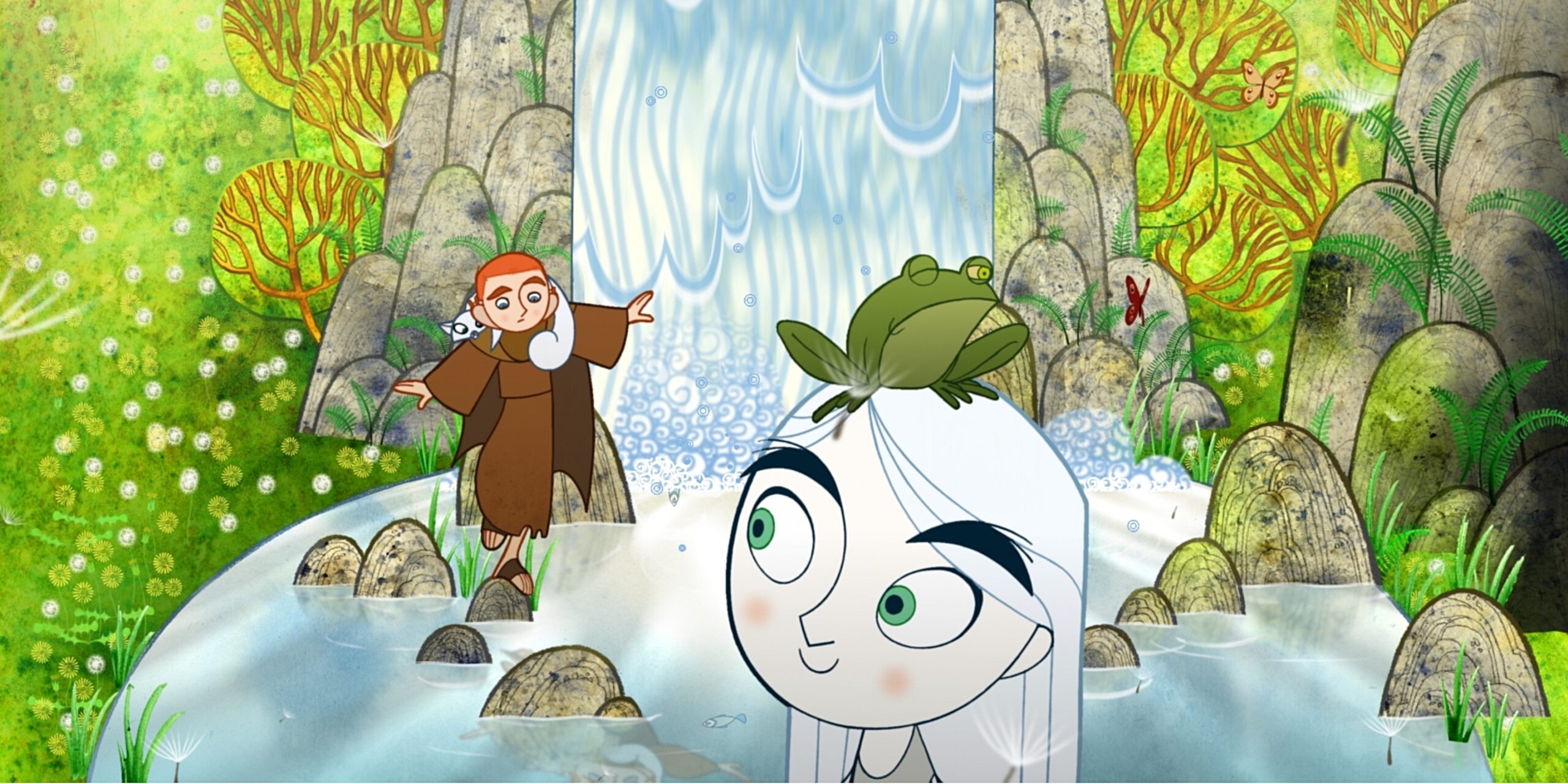 Directed by Nora Twomey and Tomm Moore
Directed by Nora Twomey and Tomm Moore
In his quest to help a monk complete the legendary book of Kells in “The Secret of Kells,” apprentice Brendan meets forest fairy Aisling, who lives in the woods as a figure of Irish mythology. She warns him of Crom Cruach, a deity of death who has captured the ‘Eye of Colm Cille,’ thus depriving the book of its needed crystal. Brendan truly couldn’t have known all of this without venturing out into the world. He learns more in the woods, from ancient trees and stones, than from inside the walls of Abbey. From the miraculous reveal of the enchanted forest to the mesmerizing battle for the crystal that is conveyed through lines of chalk, not a scene goes by without you feeling hypnotized by the animation. The beauty of “The Secret of Kells” is that it awakens the same feeling for the viewer that it does the protagonist: a deeper appreciation for the power of sharing stories. In a time when characters are on the verge of losing all hope in illuminators and when former illuminators have chosen to give up, the fight for and sharing of art brings back light.
“Song Of The Sea” (2014)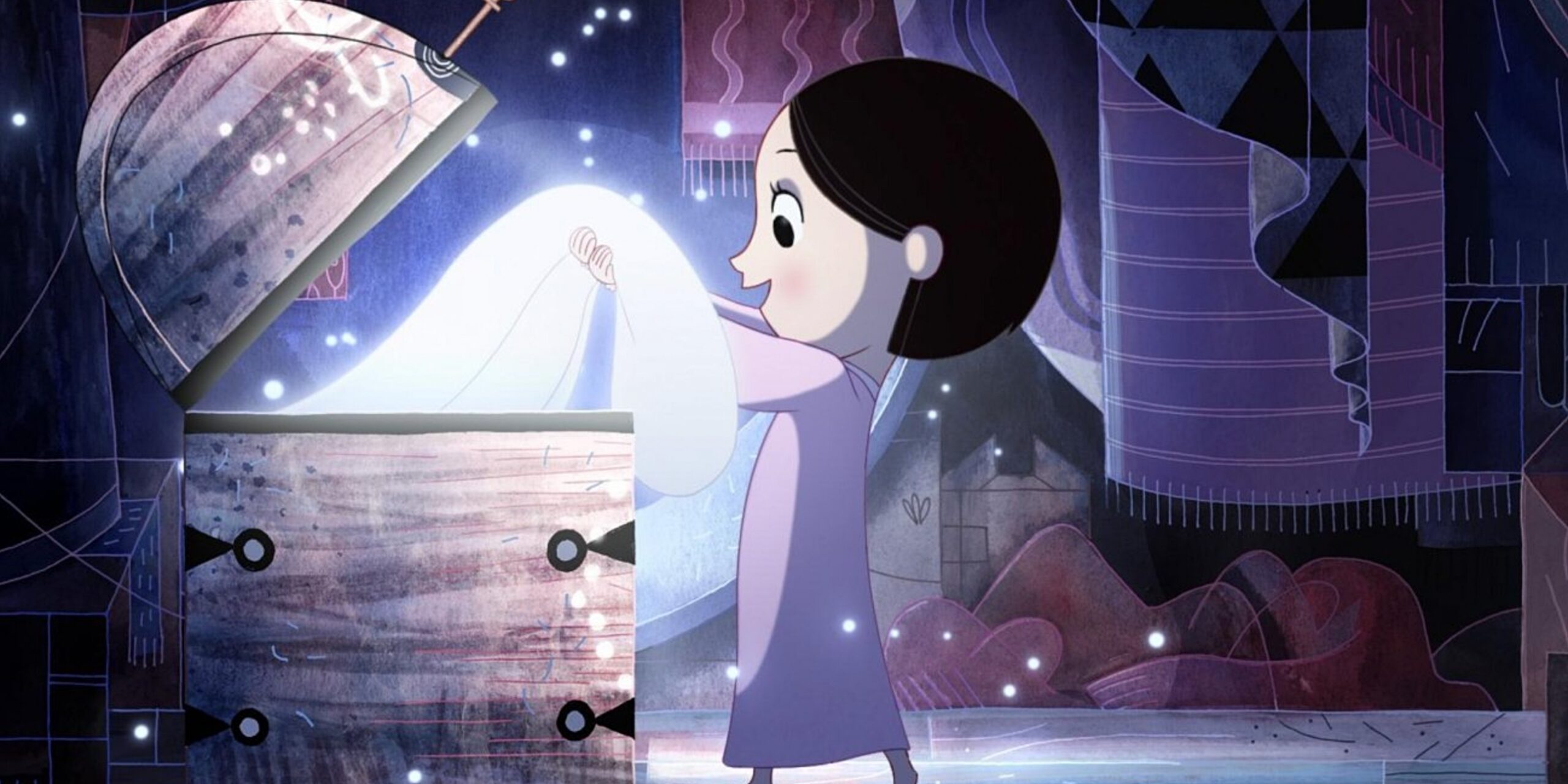 Directed by Tomm Moore
Directed by Tomm Moore
Told with the gentle disposition of a bedtime story, “Song of the Sea” is based on a Celtic myth. Selkies are creatures who can transform from seal to human and back. As legend has it, female selkies were often lured to the sea, and as a result, women disappeared from their families. “Song of the Sea” focuses on the children left behind in this myth. After their mother’s disappearance, Ben and his little sister Saoirse are relocated to live with their grandmother. Saoirse, who cannot speak with words, begins to communicate with her mother’s shell flute. The music calls upon seals that bring her to the sea for a mission: she must find her voice and break the spell of a Celtic goddess to save a magical world. Rich in mythological language and enchanting in animation, the film is swayed by melancholic emotion. It’s soothing and sad in equal measure. The expression of feelings is a key anchor in the story. By turning fairies into stones, Celtic goddess Macha is reinforcing her discomfort of feelings; at least stones don’t feel heartbreak. A wonderful scene of bottled emotions being shattered is a balm of encouragement that it’s okay to share your emotions, however sad.
“The Breadwinner” (2017)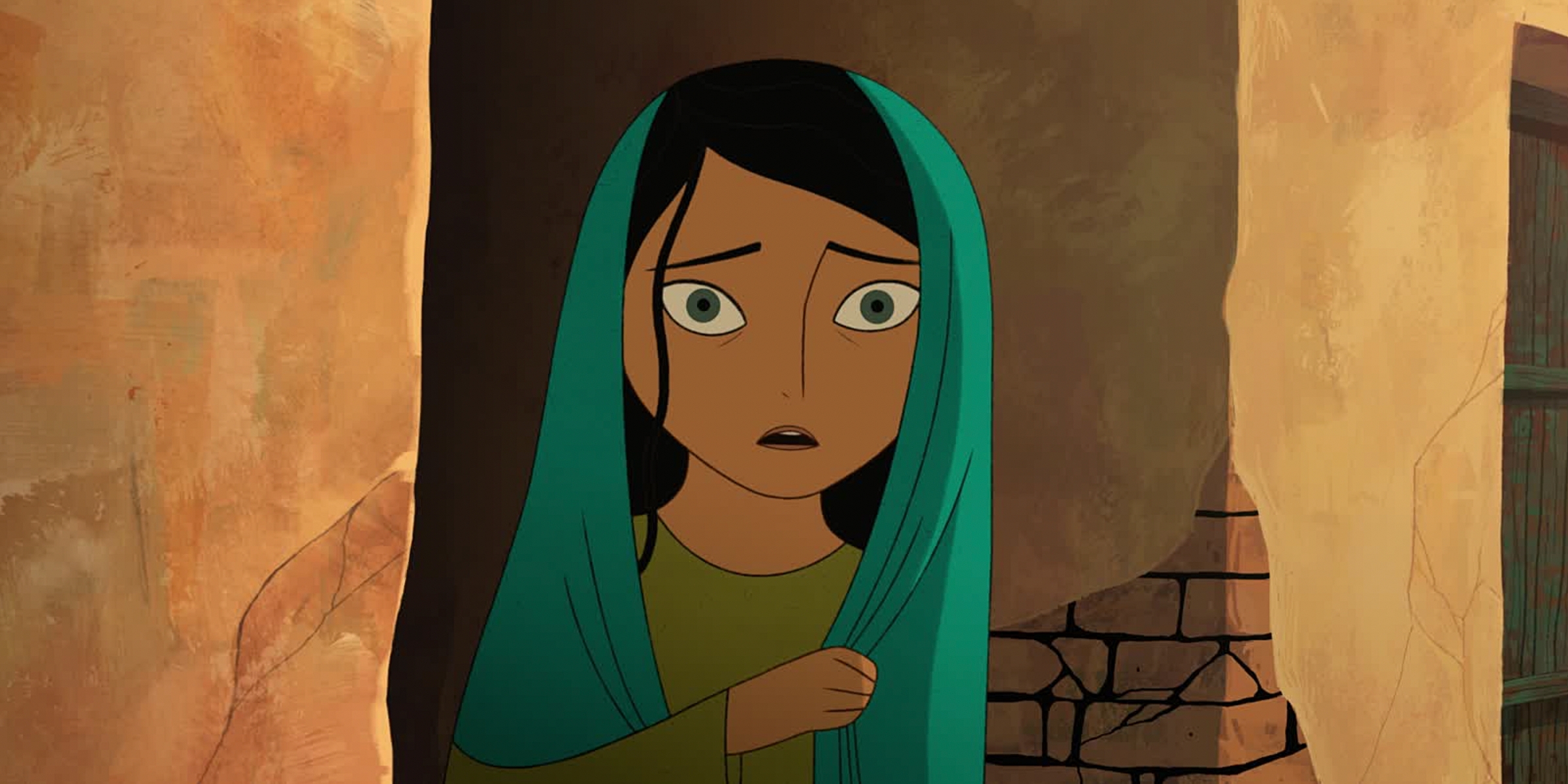 Directed by Nora Twomey
Directed by Nora Twomey
Of Cartoon Saloon’s five feature films, “The Breadwinner” carries the most mature subject matter. Based on the young adult novel of the same name by Deborah Ellis, the story explores days in the life of Parvana, a girl growing up in 2001 Afghanistan under the Taliban regime. After her father is unjustly arrested, Parvana takes serious risks to become the breadwinner of her family and rescue her father from prison. The film does not shy away from the realities of women’s experiences and the utter disregard for their human rights. That same lens shows glimmers of playfulness and childlike wonder with a brilliant combination of 2D and cut-out animation. Parvana has a powerful imagination; she invents a fairytale about her brother Sulayman and assigns urgency to its message to the extent that the tale mirrors her own difficulties. After continuously sharing his strength, Parvana calls upon his bravery at the most dangerous time of her life. The film powerfully reminds us that stories are not necessarily an escape but a way of relating life back to people in the hope of finding a sense of solace.
“Wolfwalkers” (2020)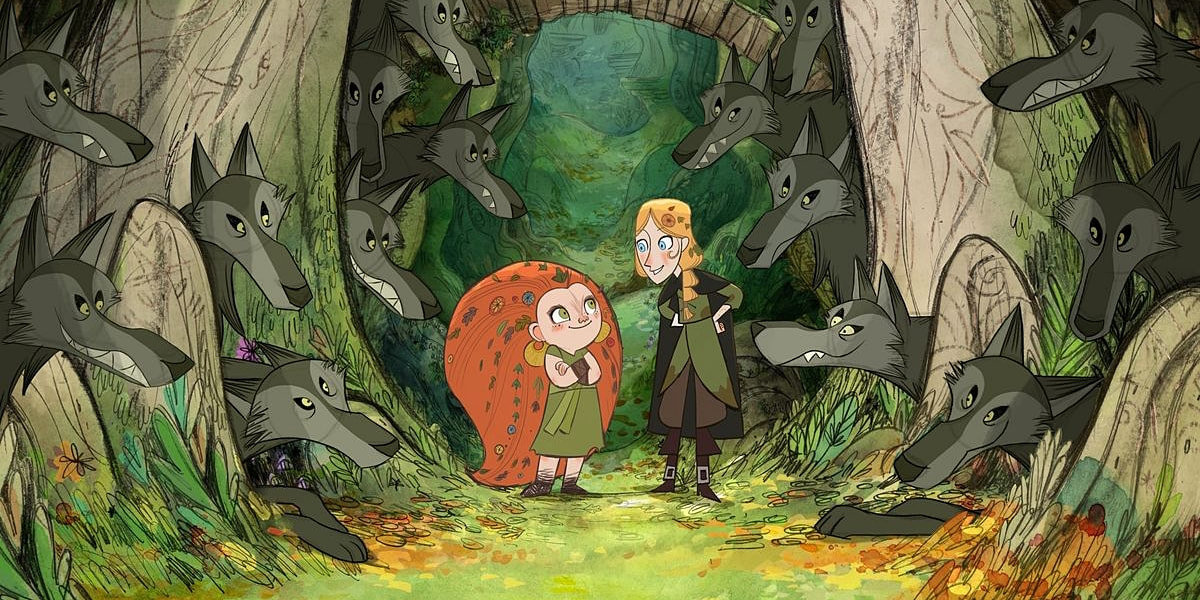 Directed by Tomm Moore & Ross Stewart
Directed by Tomm Moore & Ross Stewart
Rooted in folklore and dripping with environmental themes, “Wolfwalkers” explores the tale of people leaving their human bodies to become wolves, roaming the forests of Kilkenny. Set in 17th-century Ireland during England’s occupation, the superstition that wolves are demonic creatures reigns supreme. Eradicating the wolves was a way for England to prove their power over Ireland. But a growing friendship between apprentice hunter Robyn and wild mystical Mebh illuminates the enchanted forest of the wolves as a place of sacred wonder. With big themes of protecting wildlife and forestry from human destruction, the stakes feel sky-high. Standing out in this visual treat is the hand-drawn animation of English characters and forest creatures; the contrast of unaligned block prints and loose swirling designs. The shift in how characters are drawn from one frame to the next is a fantastic expression of the studio’s adaptability in perspective.
“My Father’s Dragon” (2022)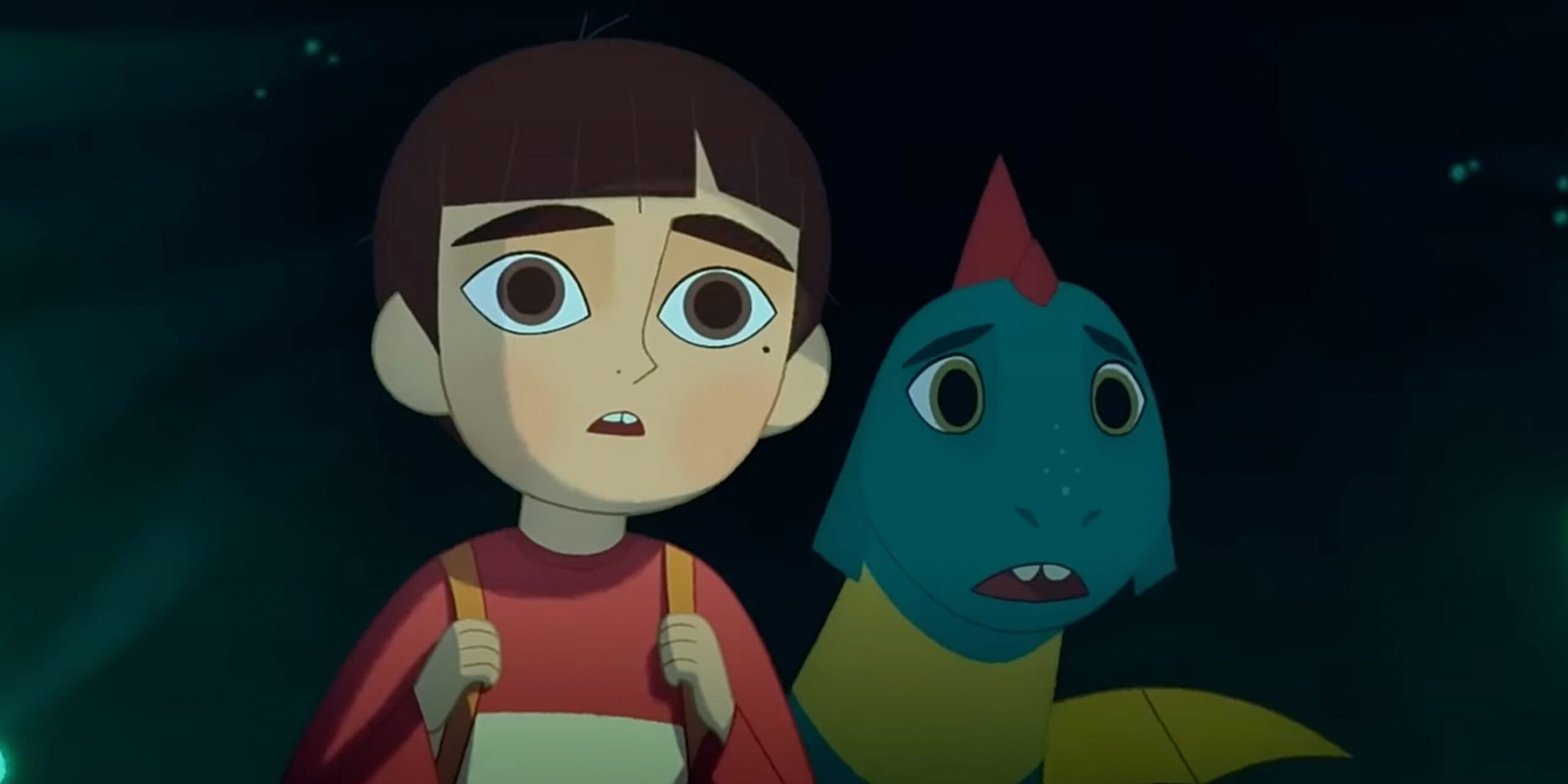 Directed by Nora Twomey
Directed by Nora Twomey
This charming and expressive fable tells the story of young Elmer, who moves to a new city and runs away from home. He discovers Wild Island, where he meets and rescues a trapped dragon named Boris. “My Father’s Dragon” may be a more straightforward approach than the darker, more layered folklore found in the studio’s previous work. But the cuddly animation looks softer around the edges. The plot is told in broader strokes and feels more geared toward children. That said, there is still a maturity to the storytelling that speaks volumes. It goes beyond conflicts of the bigger picture, like environmental preservation and the disregard for wildlife. Life lessons on a smaller scale can be found as well. Early on in the film, Elmer is being shielded by his mother from a harsh reality about their recent move to the city. Elmer then acts in the same vein later on in the film, out of protectiveness, to shield the creatures of Wild Island from losing all hope about their land being saved. This moment is one of many examples of the studio’s relatable factor; people of different ages can identify with wanting to protect someone by shielding them from the truth.
Do you think “My Father’s Dragon” will be nominated for Best Animated Feature? Do you think it will be Cartoon Saloon’s first win in the category? What is your favorite film from the animation studio? Please let us know in the comments section below or on our Twitter account, and check out the NBP team’s latest Oscar predictions here.


